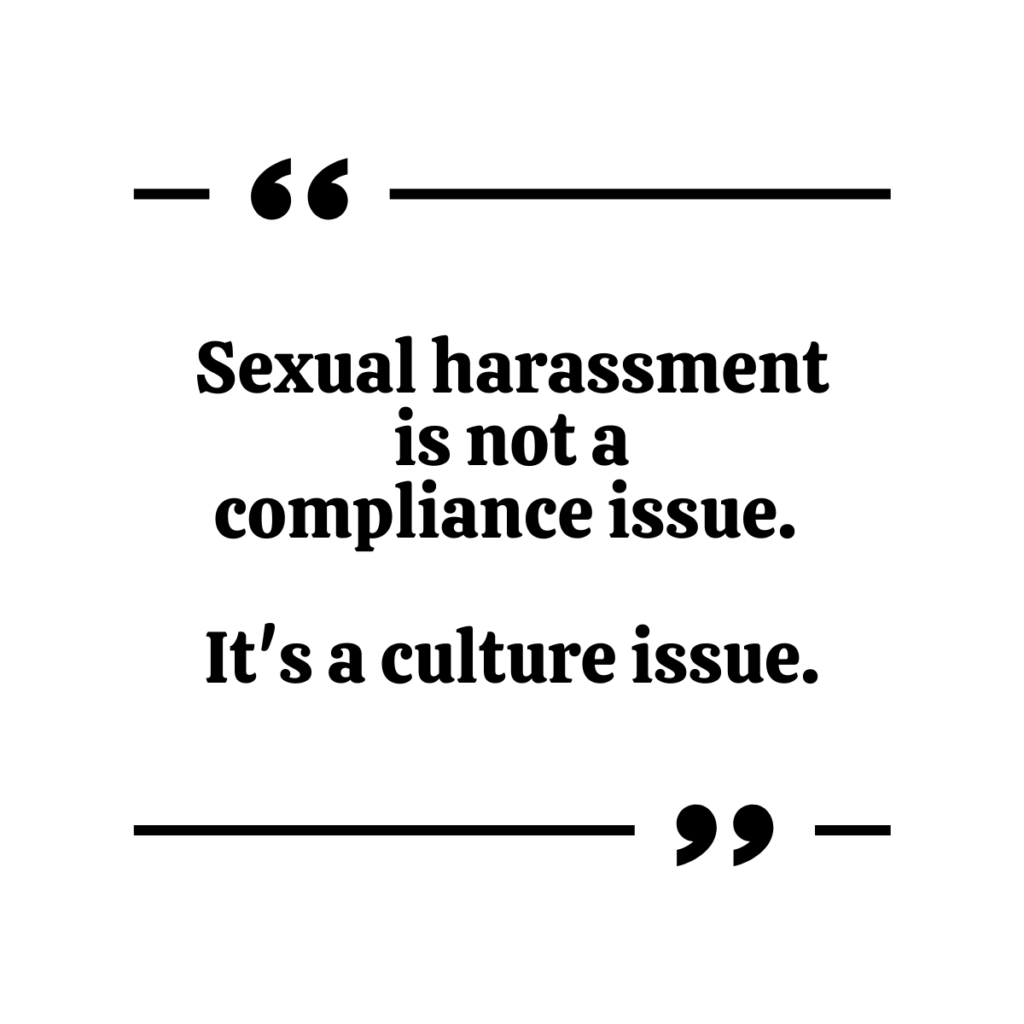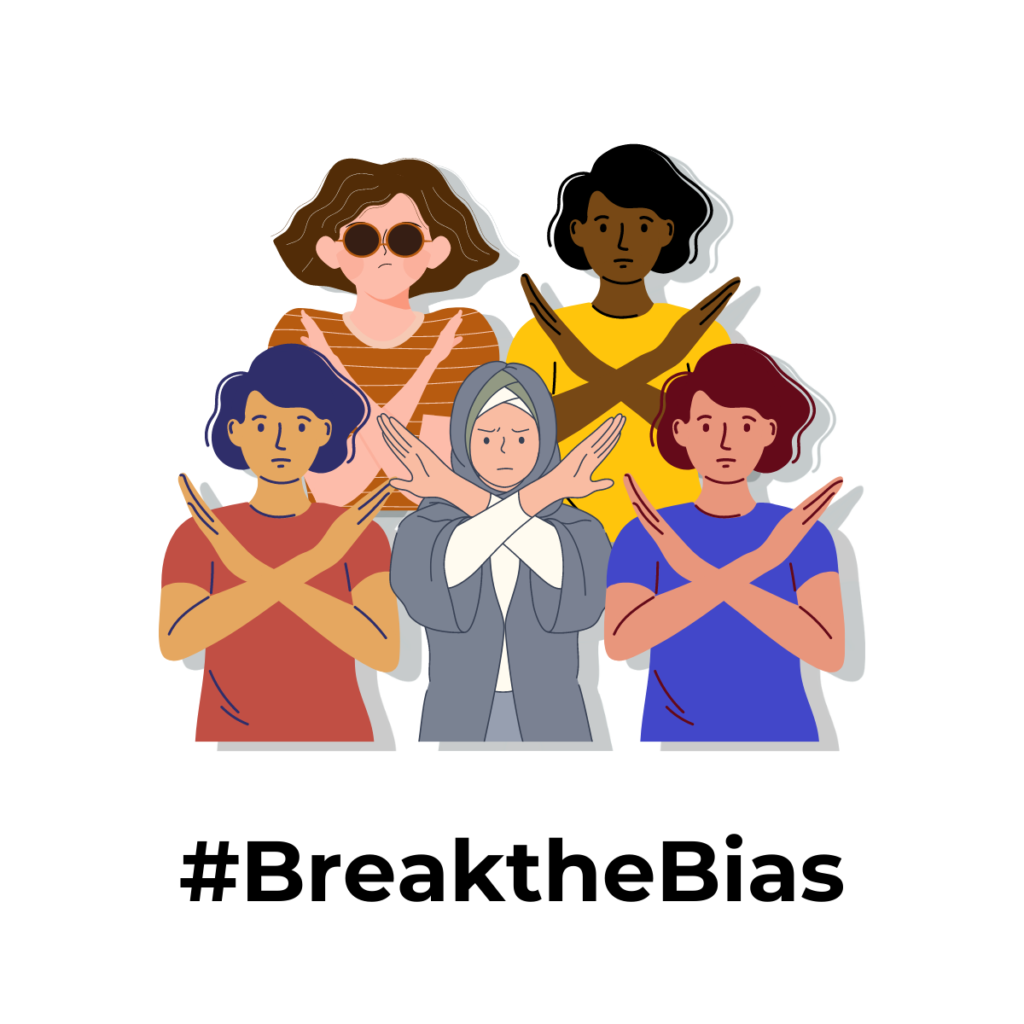By Leigh-Ann Athanasius & Kathleen Kibi

This year’s International Women’s Day theme was #breakthebias that should be carried through not just this month but in perpetuity. A significant bias women face in the context of the workplace is reporting sexual harassment. More often than not, women will be labelled as one thing or the other if they come forward, regardless of how the matter is resolved – if at all.
While we can all agree that this should never happen, are organisations doing enough to prevent sexual harassment?
An important starting point is acknowledging that harassment in different forms can happen in any workplace – even if it isn’t reported. Most individuals choose not to report out of fear, disbelief, or the most damning; scepticism based on inaction on their claim or others’. Instead, most people attempt to avoid their harasser, deny or downplay the situation, all in the belief that it is easier for everyone if they endure the behaviour.
This is where company culture comes in. Pushing the fact that an organisation is intolerant of sexual harassment and following through could go a long way in preventing any cases.
The role company culture plays
It boils down to this: Sexual harassment is not a compliance issue. It is a culture issue.
An organisation can have stacks of policies and annual seminars, but if the practice in the workplace does not reflect these, then it doesn’t really matter. When it comes down to it, checking a seminar off a to-do list won’t protect a company’s employees.

One example of company culture shaping the level of tolerance of harassment is the “superstar” dynamic with employees. A “superstar” is an individual seen bringing significant value to their employer, whether it be through prestige or money such as investment traders, surgeons, professors, partners in a law firm etc.
Workplaces who rank their employees like this leave room for harassment as senior management may be reluctant to act against these employees. “High value” employees may also feel like they are above the rules because they are rewarded, even for their poor behaviour, because of how much the company values them in the organisation.
Such company culture leads management to weigh out who they would rather risk losing between the two employees. Victim blaming is a terrible symptom of these workplaces, especially when the victim is female, and the perpetrator is someone in a higher position than she is. This further reduces the likelihood of incidents of harassment being reported. It creates a bias against victims of sexual harassment and allows the harassment to continue unabated.
How organisational culture change can end sexual harassment
If for whatever reason there isn’t one, organizations should have policies and procedures in place to address harassment and conduct training so the policies can be followed. This is the bare minimum that will govern the company culture.
However, official policies alone against sexual harassment do not mean that organizational culture support victims and reporting. To stop workplace harassment, companies need to first address the underlying power imbalance and behavioural expectations that make up the organization’s culture. Is there a safe way for employees to report and discuss anything that makes them uncomfortable in the office? Is there any follow through when these reports are made? Reporting practices should offer more support for victims. Anonymous reporting could be one solution that would offer victims more agency in reporting sexual harassment.

HR departments play a critical role in maintaining company culture and so they need to ensure that they can establish themselves as a safe place to report harassment without the fear of victimisation for coming forward.
Consistently applying the same policies and consequences across the board regardless of the individuals involved sends a strong message to employees that sexual harassment will not be tolerated.
Believe the victim. Even if an investigation into the matter needs to be conducted to verify the details, it goes a long way for victims to know that they will be listened to without being dismissed as overreacting.
Building a culture intolerant of sexual harassment is the responsibility of everyone in the organisation. It is on the senior management and HR to create and implement policies that protect their employees; and indiscriminately follow through with the consequences of violating those policies. It is on the staff to abide by those rules and foster the culture that is intolerant of harassment.
#Breakthebias means fighting against the status quo. It takes effort and making the hard choice for a better, safer environment for all vs. protecting the selfish actions of the few. With the right effort put in place by everyone in the organisation, workplaces can be safer for all.




